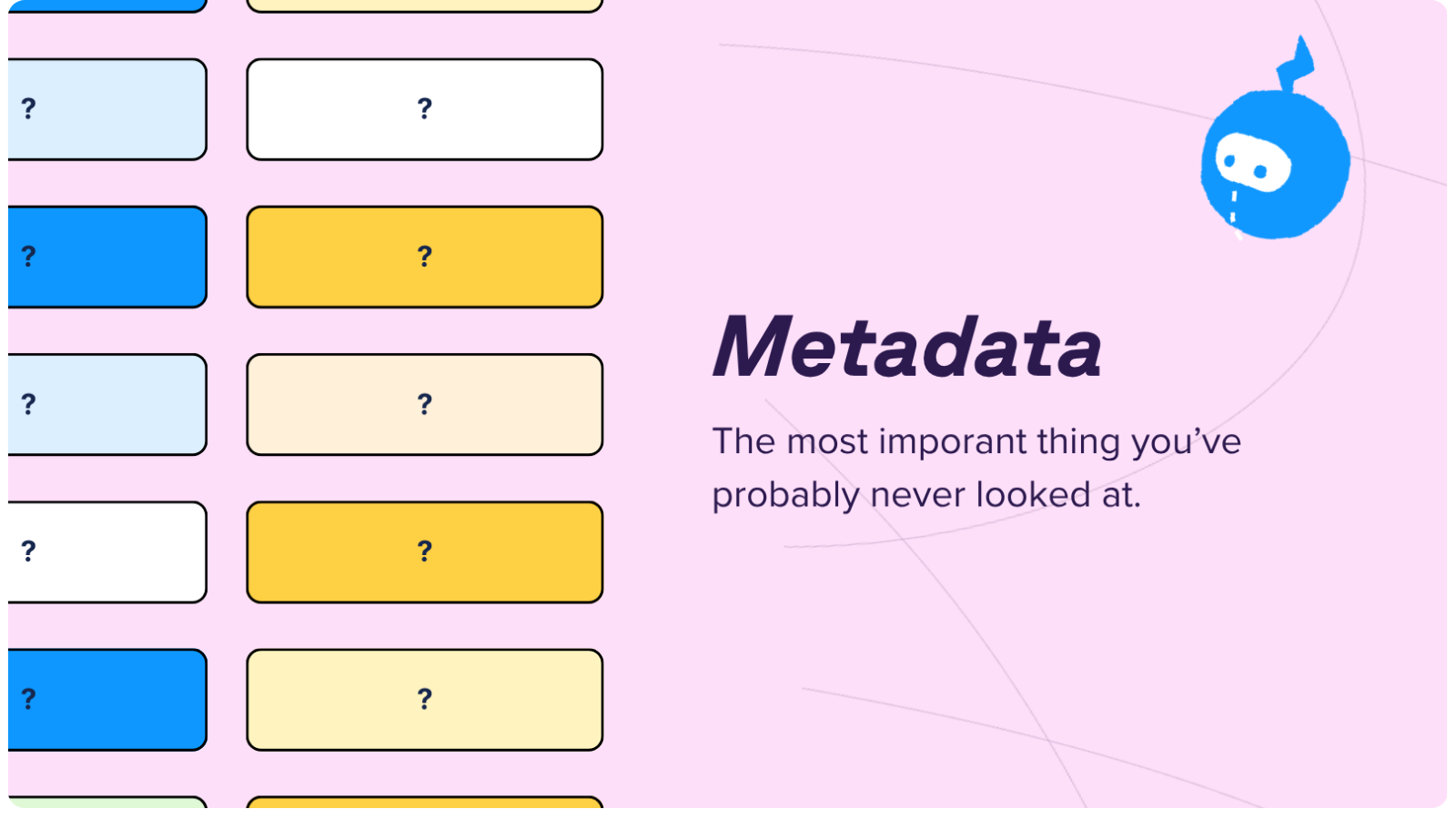Alright, let's be honest... most people don’t think about metadata. You are probably among those people. And you can be forgiven for it... until the end of this post.
You may think about dashboards, leads, maybe your favorite automation when it actually fires.
Metadata? That’s just plumbing, right? Invisible stuff your org sits on top of, like a sleeping dragon made of XML?
Sure.
Well, that dragon just woke up.
Metadata — all the structure, the lineage, and intent behind every field, flow, and rule — has become one of the most powerful (and least understood) forces in all of business.
It’s what makes AI useful, automations safe, and systems… actually sane.
And if you’re leading ops, data, or a tech strategy, metadata governance isn’t something you can afford to ignore. It’s now the difference between moving fast and tripping over your own schema.
And companies that fall now? Well... it's unlikely they're going to catch up.
What metadata actually is (and why it keeps breaking your stuff)
For the uninitiated, metadata is simply data about data — the “aboutness” layer that describes what everything means.
Example: A field called Customer_Tier is just data. But knowing that it’s a picklist, populated by a flow, with values that drive pricing logic, and owned by Sales Ops? That is the metadata.
Think: why things exist, how they relate, and what happens when you mess with them.
If data is the coffee, metadata is the mug. ☕️
Why it’s suddenly cool to care about metadata
For years, metadata was the domain of back-end architects and people who use the word “governance” unironically. (Hey that was me!)
Oh, how the tides have shifted.
Metadata has gone mainstream — and not just because Gartner said so.
Here’s what changed:
1. AI has a major context problem
Large language models don’t “know” your business. They need context. What each object represents, what relationships matter, who owns what. Metadata gives them that blueprint. Without it, they’re just guessing in JSON.
2. Systems have exploded
We're going to guess that Salesforce isn’t your only "source of truth" anymore. Data now lives across CRMs, data lakes, warehouses, and an alarming number of SaaS integrations called “connectors.” Metadata is how you keep this spaghetti organized — your architectural Rosetta Stone, so to speak.
3. It's the Age of Accountability
Between GDPR, CCPA, and the AI Act, governance is no longer optional. You need to prove not just what your data does, but how it moves and why. Metadata is the audit trail that lets you say, “Yes, we know exactly what happened” — and actually mean it.
From admin task to executive imperative
Treating metadata as a checkbox project is like treating oxygen as a side hustle. It’s the literal substrate your enterprise runs on — not a side file.
Modern ops leaders are realizing that when you surface metadata — when you actually see how everything connects — you gain:
- Visibility into dependencies and impact before you break something.
- Velocity because changes stop being guesswork.
- Trust because context makes data reliable again.
- Autonomy because systems (and agents) can finally act intelligently.
It’s no wonder metadata management platforms are now one of the fastest-growing corners of enterprise infrastructure — expected to surpass $10 billion globally this year, growing at over 20% annually.
The invisible layer is suddenly quite visible. And when you shine a light on it... it often ain't pretty.
What “metadata-first” looks like in practice
If you’re a CIO or RevOps leader trying to build a future-proof foundation, here’s what the next frontier looks like:
1. Start with outcomes.
Metadata projects die when they start as cleanup. Tie them to business value: AI reliability, compliance risk reduction, faster release cycles.
2. Unify your silos.
Your metadata lives everywhere — in Salesforce, Snowflake, your BI tool, your MLOps stack. Stitch it together into a single graph of relationships. Context is only useful when it’s continuous.
3. Automate the boring stuff.
Manual tagging doesn’t scale. Use AI to infer lineage, ownership, and definitions. Let metadata update itself when a schema or flow changes. This is called active metadata — and it’s how you keep your org alive, not fossilized.
4. Govern the full layer.
Metadata deserves version control, audit logs, and lifecycle policies — just like your data. Because a bad field description can cause just as much chaos as a bad field formula.
5. Embed context everywhere.
The best metadata will be surfaced where the work happens. In your CRM, dashboards, and AI copilots. When context lives in the flow of work, alignment becomes effortless.
Call it: The Metadata Renaissance (Or 'The End of Systems Drag')
At Sweep, we think of metadata as the antidote to what we call Systems Drag — the invisible friction that slows every business down. It’s the endless guesswork, duplicated logic, and unexplained errors that happen when systems lose context.
And metadata — clear, dynamic, well governed metadata — is what cuts through it all. It gives AI agents the grounding they need, gives humans the visibility they crave, and gives leaders the confidence to move faster without breaking things.
So sure, metadata might still sound like plumbing. But in an AI-driven world, you reliable good pipes.
The companies that get this right — who see metadata not as maintenance but as meaning — will be the ones who actually stay ahead.

